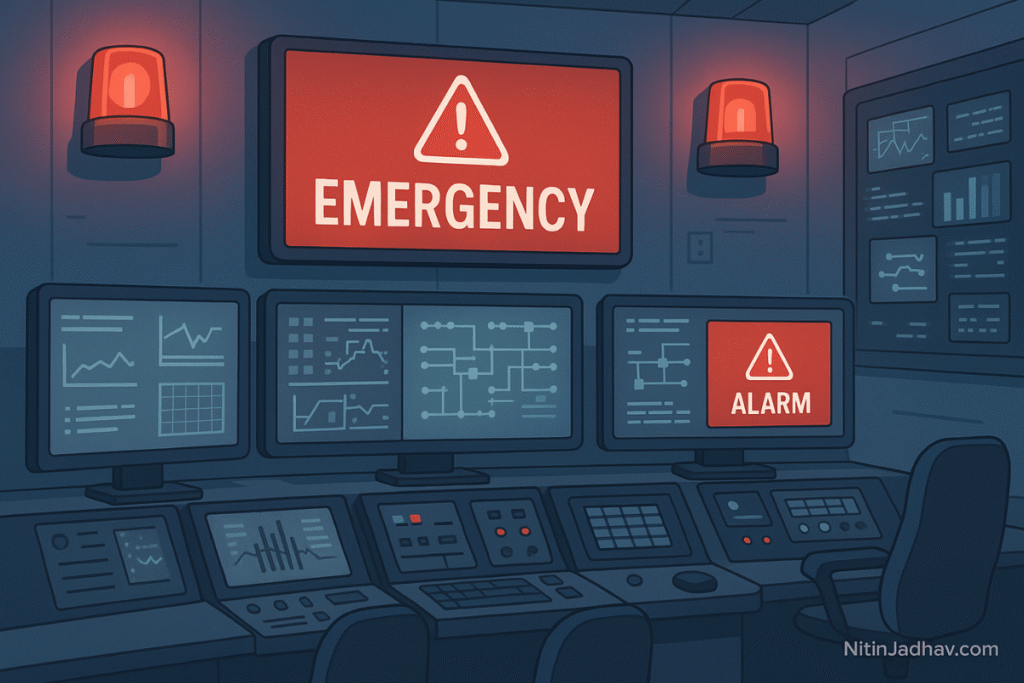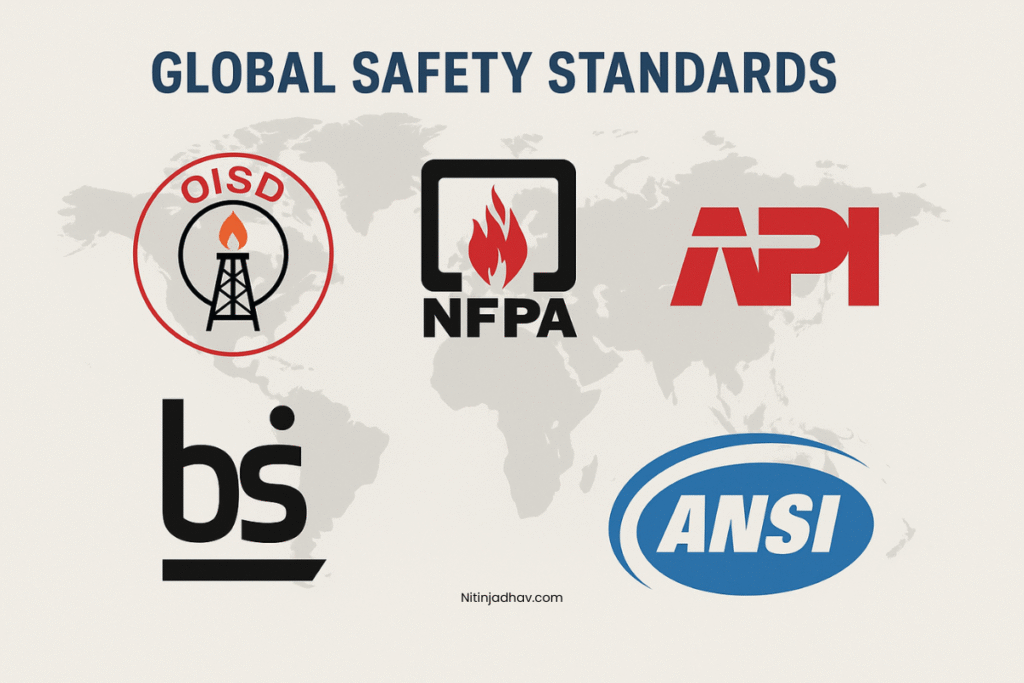Introduction
Emergency Response & Disaster Management Planning (ERDMP) is a strategic framework developed to mitigate the risks associated with industrial emergencies and disasters. Industries dealing with hazardous substances, such as petroleum, natural gas, chemicals, and related infrastructure, are mandated to implement ERDMP under regulations from bodies like the Petroleum and Natural Gas Regulatory Board (PNGRB) in India.
This article provides a detailed overview of ERDMP, covering its necessity, statutory framework, components, emergency classification, and procedural implementation. It aims to serve as a complete guide for safety professionals, facility managers, and industry stakeholders.
Why ERDMP is Needed
- Risk Mitigation: Industrial operations involving flammable, explosive, or toxic substances pose a high risk. ERDMP minimizes the impact of such risks.
- Regulatory Compliance: In India, ERDMP is a mandatory requirement under PNGRB regulations.
- Safety Assurance: Protects human life, property, and the environment during emergencies.
- Improved Preparedness: Promotes preparedness, quick response, and recovery.
- Business Continuity: Helps in faster resumption of operations post-emergency.
Certification of ERDMP
- Certifying Authority: ERDMP manuals must be certified by a PNGRB-authorized Third Party Inspection Agency (TPIA).
- Frequency: Certification is valid for 3 years, with annual reviews recommended.
- Audit Requirements: Facilities are audited for compliance with the latest ERDMP guidelines.
How to Prepare an ERDMP Manual
- Site Survey & Hazard Identification
- Classification of Emergencies
- Demographic Study
- Infrastructure Assessment
- Risk Assessment & Consequence Analysis
- Emergency Scenarios and Mitigation Plans
- Preparation of On-Site & Off-Site Emergency Plans
- Formulation of Emergency Response Team (ERT)
- Training & Mock Drills
- Documentation & Formatting as per PNGRB Guidelines
Classification of Emergencies
- Level 1 Emergency: Minor incident, controllable within the site.
- Level 2 Emergency: Localized incident needing external help.
- Level 3 Emergency: Major emergency with significant impact requiring district or state level support.
Statutory Requirements
- PNGRB Regulations (2010 & 2020 Amendment)
- Factories Act, 1948
- Environmental Protection Act, 1986
- MSIHC Rules, 1989
- OISD Guidelines
Pre-Emergency Planning
- Risk identification and evaluation
- Establishment of Emergency Response Team
- Layout of escape routes
- Emergency control center planning
Emergency Mitigation Measures
- Installation of fire detection and suppression systems
- Isolation valves and emergency shutdown systems
- Leak detection and alarm systems
- Containment systems for spills and releases
Emergency Preparedness Measures
- Conducting mock drills and simulations
- Training of employees and contractors
- Public awareness campaigns
- Availability of PPE and emergency kits
Emergency Response Procedures and Measures
- Activation of alarm and notification
- Assembly point management
- Rescue and evacuation
- Firefighting and first aid
- Coordination with external emergency services
Emergency Organisation and Responsibilities
| Role | Responsibilities |
|---|---|
| Incident Controller | Leads the emergency response |
| Site Main Controller | Coordinates all resources |
| Safety Officer | Ensures safety protocols and PPE compliance |
| Communication Officer | Maintains internal and external communication |
| Medical Team | Provides first aid and manages casualties |
| Security | Controls access and crowd management |
Infrastructure Requirements
- Dedicated Emergency Control Center (ECC)
- Firefighting and rescue equipment
- Emergency lighting and power backup
- Medical room and first-aid stations
- Emergency communication tools (PA systems, radios)
Declaration of On-site and Off-site Emergency
- On-site Emergency: Declared by plant personnel; managed within the facility.
- Off-site Emergency: Declared by the District Magistrate based on escalation.
Resources for Controlling Emergency
- Mutual aid agreements with neighboring industries
- Availability of emergency materials and spares
- Transport arrangements for evacuation
- Inventory of emergency contact numbers
Demographic Information
- Population density around the facility
- Location of nearby schools, hospitals, residential areas
- Road networks and access routes
Medical Facilities
- Tie-ups with local hospitals
- On-site ambulances
- Trained medical professionals and paramedics
Evacuation
- Designated escape routes
- Assembly point locations
- Headcount and tracking procedures
- Special provisions for elderly and disabled
Public Relations and Information to Public
- Predefined media handling strategy
- Public address system for nearby residents
- Information pamphlets and awareness boards
Reporting of the Incident
- Immediate internal report to safety head and plant manager
- Notification to statutory authorities within 24 hours
- Detailed post-incident report and corrective actions
Emergency Recovery Procedures
- Assessment of damage and downtime
- Re-establishing utilities and production
- Debrief and post-incident review
- Documentation and records update
Security Threat Plan and Action Plan to Meet Eventualities
- Perimeter surveillance and access control
- Bomb threat and sabotage action plans
- Cybersecurity measures
- Coordination with law enforcement agencies
Conclusion
Emergency Response and Disaster Management Planning is a cornerstone of industrial safety and business resilience. A well-prepared and certified ERDMP not only ensures compliance with national safety standards but also builds a culture of safety, preparedness, and confidence across the workforce and community.
Industries should regularly update and audit their ERDMPs to incorporate new learnings, technologies, and evolving risks. With effective planning and training, the impact of industrial emergencies can be significantly minimized.


